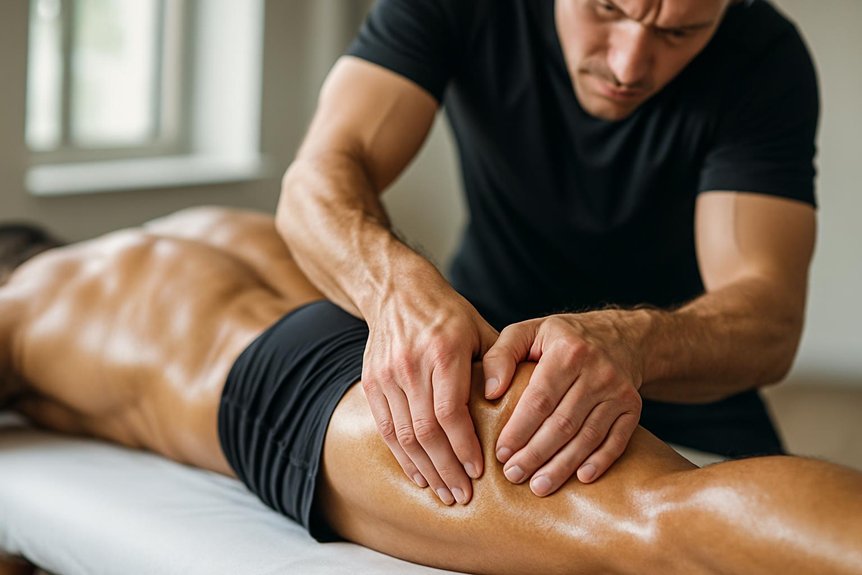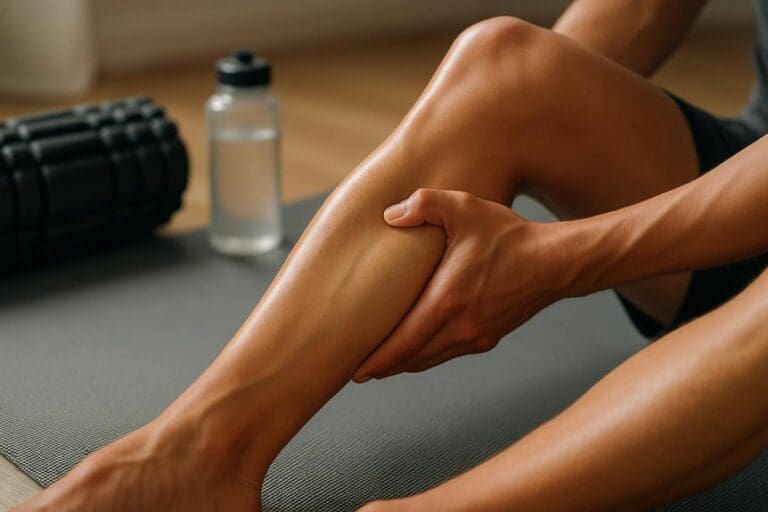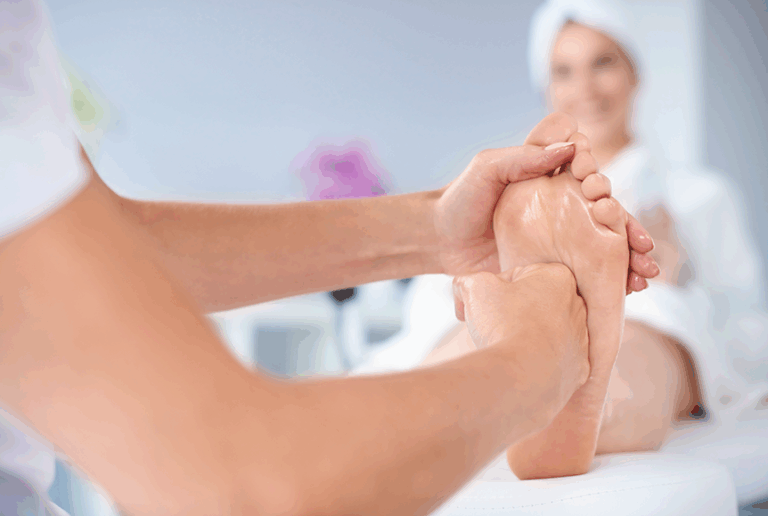A athletic recovery massage works by using targeted, anatomy-based techniques to manipulate muscles, tendons, and fascia, relieving tension and promoting recovery. Therapists assess posture, muscle tone, and movement, tailoring pressure and methods like effleurage, deep tissue work, and stretching to individual needs. These treatments enhance blood flow, break down adhesions, reduce soreness, and support flexibility, all while maintaining clear communication with the client. Further insights reveal specifics about techniques, injury prevention, and personalized aftercare strategies.
The Principles Behind this Massage
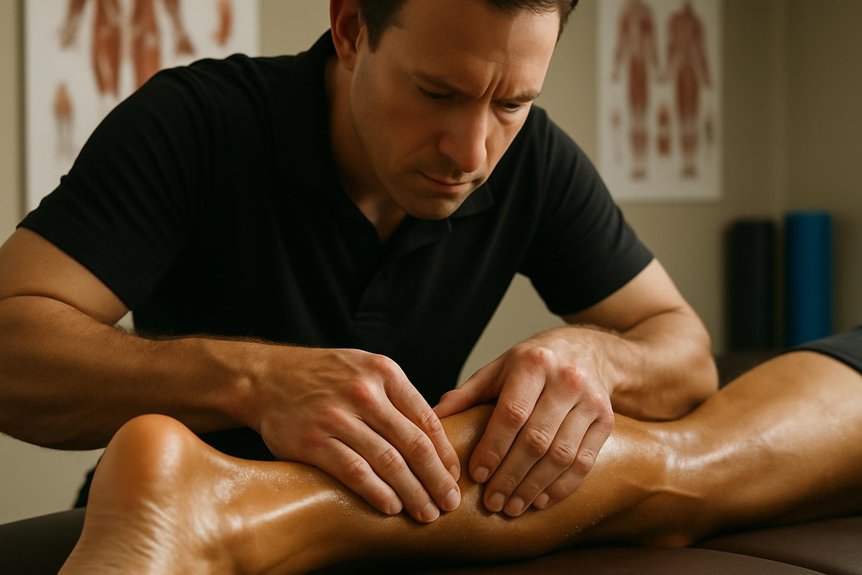
How does this massage deliver its widely recognised benefits to athletes and active individuals? At Spa & Massage, the principles behind it are grounded in a deep understanding of human anatomy and movement. This specialised approach focuses on manipulating soft tissues—muscles, tendons, ligaments, and fascia—to enhance performance, support recovery, and prevent injury.
Therapists assess each client’s posture, muscle tone, and movement patterns, then tailor the session accordingly. Through targeted pressure and precise strokes, circulation is improved, metabolic waste is flushed away, and muscle fibres are encouraged to realign.
This careful attention to the body’s needs not only helps alleviate discomfort and tension but also fosters a sense of trust and restoration. Every treatment is uniquely adapted, ensuring a meaningful, responsive experience for each individual. One of the key benefits of sports massage is its ability to help athletes recover more efficiently and reduce the risk of future injuries.
Common Techniques Used by Our Therapists
A range of targeted manual techniques forms the foundation of performance therapy at Spa & Massage. Therapists apply deep tissue strokes, kneading, and precise trigger point work to areas of muscular tension.
Effleurage—long, gliding movements—warms tissues and increases circulation. Petrissage, involving gentle lifting and compression, enhances pliability in muscle fibers. Friction techniques target adhesions and scar tissue, while tapotement delivers rhythmic percussive stimulation to invigorate the body.
Each method is selected and adjusted to respond sensitively to the client’s unique muscular landscape. Therapists at Spa & Massage rely on their anatomical expertise, using their hands, forearms, and elbows to access deeper layers as needed, always maintaining clear communication to ensure comfort and effectiveness throughout the session.
How Performance Therapy Supports Muscle Recovery
It plays a key role in supporting muscle recovery by targeting post-exercise soreness, promoting ideal blood flow, and addressing areas prone to strain.
Through focused manual techniques, therapists at Spa & Massage help minimize discomfort and encourage the delivery of oxygen and nutrients needed for tissue repair.
This approach can also decrease the likelihood of future injuries by maintaining muscle flexibility and resilience.
Reducing Muscle Soreness
Why does muscle soreness often follow intense physical activity? Vigorous exercise creates microscopic tears within muscle fibers, triggering inflammation and discomfort—commonly known as delayed onset muscle soreness (DOMS).
At Spa & Massage clinics, therapists address this at its root, utilizing targeted massage techniques such as kneading, friction, and gentle stretching. These methods are anatomically designed to reduce muscular tension, disrupt pain signals, and assist in the removal of metabolic byproducts that accumulate after exertion.
Each session is tailored to the individual, with therapists carefully adjusting pressure and technique to match the client’s comfort and recovery needs.
In this client-centered environment, the focus is on soothing fatigued tissues and restoring a sense of physical ease, helping clients reconnect with their bodies and move forward with confidence.
Enhancing Circulation Flow
Addressing muscle soreness involves more than easing discomfort—optimising circulation is a fundamental element of supporting muscle recovery.
In the hands of skilled therapists at Spa & Massage, specific massage techniques, such as effleurage and deep tissue strokes, are applied with precise pressure and direction. These techniques stimulate blood flow through the capillaries and larger vessels, delivering oxygen and nutrients to fatigued muscle fibres while encouraging removal of metabolic waste like lactic acid.
Enhanced circulation nurtures tissues, reducing swelling and promoting a sense of renewal. The warmth of massage oils, carefully chosen for their skin-friendly qualities in our clinics, helps further facilitate this flow.
Each tailored session is designed to foster a deep connection between body and wellbeing, supporting clients’ recovery at every layer.
Preventing Future Injuries
Through targeted manipulation of muscle fibres, experienced therapists at Spa & Massage actively aid in preventing future injuries by identifying and addressing underlying muscular imbalances and areas of tension before they escalate.
Focused techniques, such as deep tissue release and myofascial work, help lengthen tight muscle strands, correct asymmetries, and reduce the risk of strains and tears. Each session is tailored to reveal and resolve subtle restrictions in movement, ensuring ideal alignment and resilience.
The therapists’ attentive approach allows them to detect early signs of overuse or compensatory patterns, fostering a sense of trust and safety for the client. By restoring balance and flexibility, athletic recovery massage becomes a proactive measure—supporting not only immediate recovery but also long-term athletic wellbeing and confidence.
The Role of this Massage Therapy in Injury Prevention
It plays a key role in injury prevention by increasing muscle flexibility and promoting balanced tissue function.
Targeted techniques—such as those used at Spa & Massage—help lengthen muscle fibers and alleviate tightness, reducing the likelihood of strain or overuse injuries.
This approach supports clients in maintaining ideal movement patterns and resilience during physical activity.
Enhancing Muscle Flexibility
How can targeted manual therapy contribute to greater muscle flexibility and reduce the risk of injury? At Spa & Massage, therapists employ specific techniques—such as myofascial release, dynamic stretching, and deep tissue work—to address muscle tightness and fascial restrictions.
These methods gently elongate muscle fibers, promote *ideal* alignment, and encourage blood flow to soft tissues, aiding the body’s natural flexibility. Attention is given to connective tissue adhesions that may restrict range of motion, with careful manipulation tailored to each client’s needs and comfort.
Reducing Strain Risks
Building on the improved flexibility achieved by targeted manual therapy, injury prevention becomes a natural extension of effective massage technique practice.
Through anatomical assessment and precise techniques—such as effleurage, friction, and myofascial release—therapists at Spa & Massage focus on areas vulnerable to strain, including the hamstrings, calves, and lower back.
By addressing muscular imbalances and reducing adhesions, athletic recovery massage interrupts the cycle of microtrauma that often precedes injury.
Therapists tailor pressure and movement to each client’s unique physiology, enhancing tissue resilience and proprioceptive awareness.
In this way, athletic recovery massage not only supports recovery but also minimizes risk, allowing clients to move confidently and intuitively.
This preventative approach helps maintain an active lifestyle, fostering a sense of safety and trust within every session.
What to Expect During Your Session
Upon arrival at Spa & Massage, clients are welcomed into a calm environment designed to support both physical and mental relaxation.
The session begins with a brief consultation, where the therapist seeks to understand recent activities and any areas of muscular tension or discomfort.
In the softly lit treatment room, privacy and comfort are prioritised.
The therapist applies targeted techniques—such as effleurage, petrissage, and deep friction—focusing on muscle groups under repetitive strain or tension.
Professional-grade oils are used to facilitate smooth, precise strokes while nourishing the skin.
Throughout the massage, communication is encouraged, ensuring pressure and technique match each client’s preferences.
The overall experience is both soothing and restorative, fostering a sense of connection between body awareness and therapeutic touch.
Tailoring the Treatment to Your Specific Needs
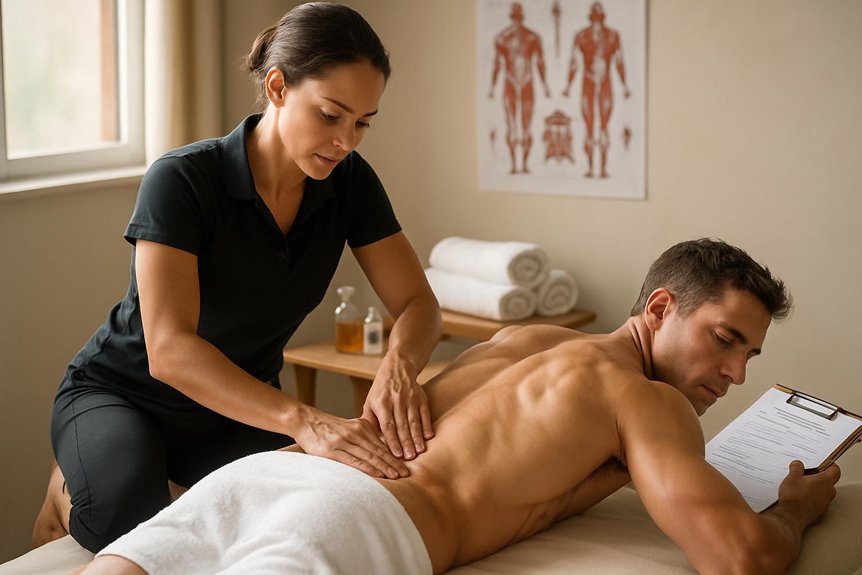
Each massage session
at Spa & Massage is shaped by the client’s unique physiology, activity level, and specific goals for recovery or performance. Therapists conduct an initial assessment, tuning in to muscular imbalances, joint mobility, and any areas of tenderness or restriction.
The approach may blend targeted deep tissue work to address adhesions, gentle stretching to enhance flexibility, or rhythmic compression to promote circulation—always selected with the client’s comfort and preferences in mind.
Attention is given to underlying anatomy: therapists trace tension patterns along muscle groups, fascia, and tendons, adjusting pressure and technique accordingly. This personalized, tactile dialogue fosters trust and relaxation, allowing for deeper therapeutic results.
Every session is a collaboration, ensuring the treatment evolves in response to the body’s subtle feedback and the client’s changing needs.
Aftercare Advice From Our Professionals
Following a massage session, Spa & Massage therapists provide tailored aftercare guidance to support ideal recovery and maximise the session’s benefits. Clients are gently advised to maintain hydration, as replenishing fluids assists lymphatic drainage and muscle recovery.
Gentle movement or stretching is often recommended to sustain joint mobility and prevent post-massage stiffness. Therapists may suggest applying cold packs to areas of tenderness, supporting reduced localised inflammation.
Emphasis is placed on listening to one’s body; rest is encouraged if fatigue is present. In their clinics, Spa & Massage professionals highlight the importance of avoiding strenuous activity immediately after treatment, allowing tissues to fully absorb the restorative effects.
This attentive aftercare ensures that the client’s body is nurtured, respected, and primed for ongoing healing and performance.
When and How Often to Book a Massage
Determining the ideal timing and frequency for massage session depends on the individual’s training load, recovery needs, and specific musculoskeletal concerns. At Spa & Massage, therapists recommend athletes and active clients integrate this massage both pre- and post-event—pre-event sessions aim to prepare muscles for performance, while post-event treatments focus on reducing soreness and supporting tissue repair.
For ongoing training, a regular schedule—such as every one to three weeks—often helps maintain flexibility and prevent injury. Each session is tailored, with techniques selected based on muscle tension, areas of overuse, or tightness.
Clients seeking deeper connection to their bodies may benefit from discussing personal goals and discomforts with their therapist, ensuring each visit responds closely to evolving physical and emotional needs.
Conclusion
This is nothing short of a transformative powerhouse for the human body—its targeted techniques can feel as if they breathe new life into every muscle fiber. With expert anatomical precision, therapists at Spa & Massage customise each session to unleash unparalleled recovery, injury prevention, and peak performance. For anyone seeking to elevate their physical wellbeing, the benefits of performance therapy are too extraordinary to overlook—making it an indispensable pillar of any active lifestyle or wellness regimen.
